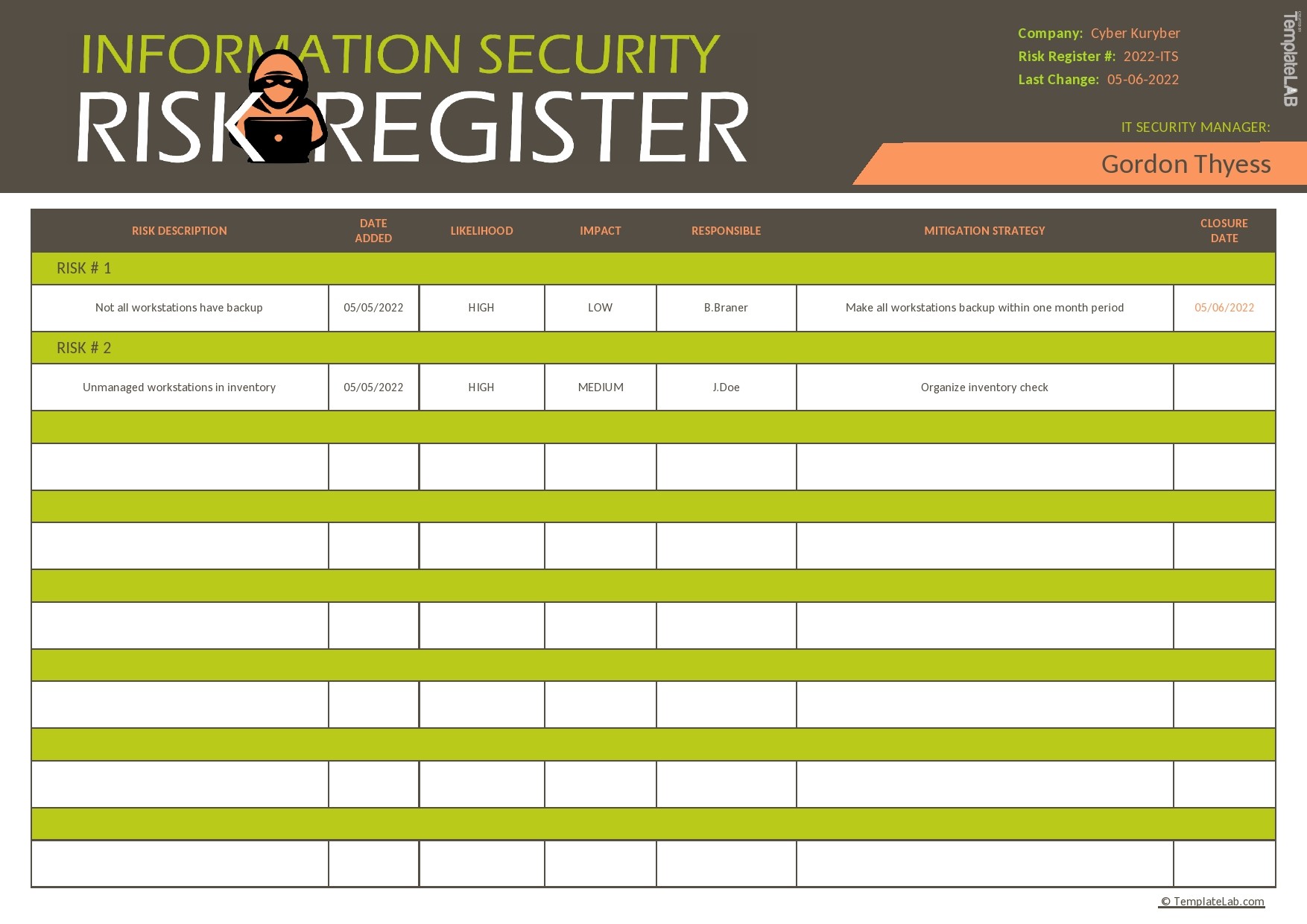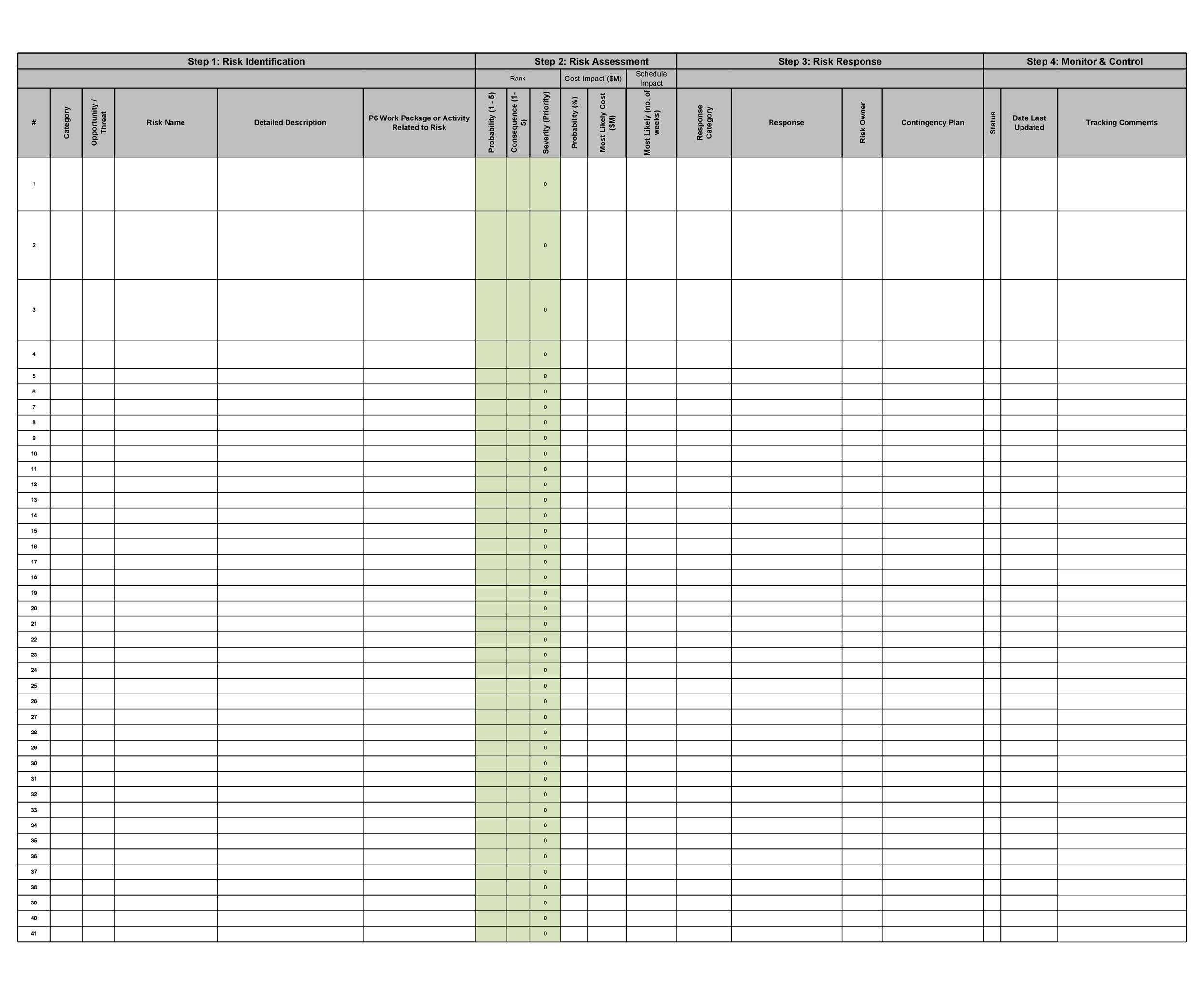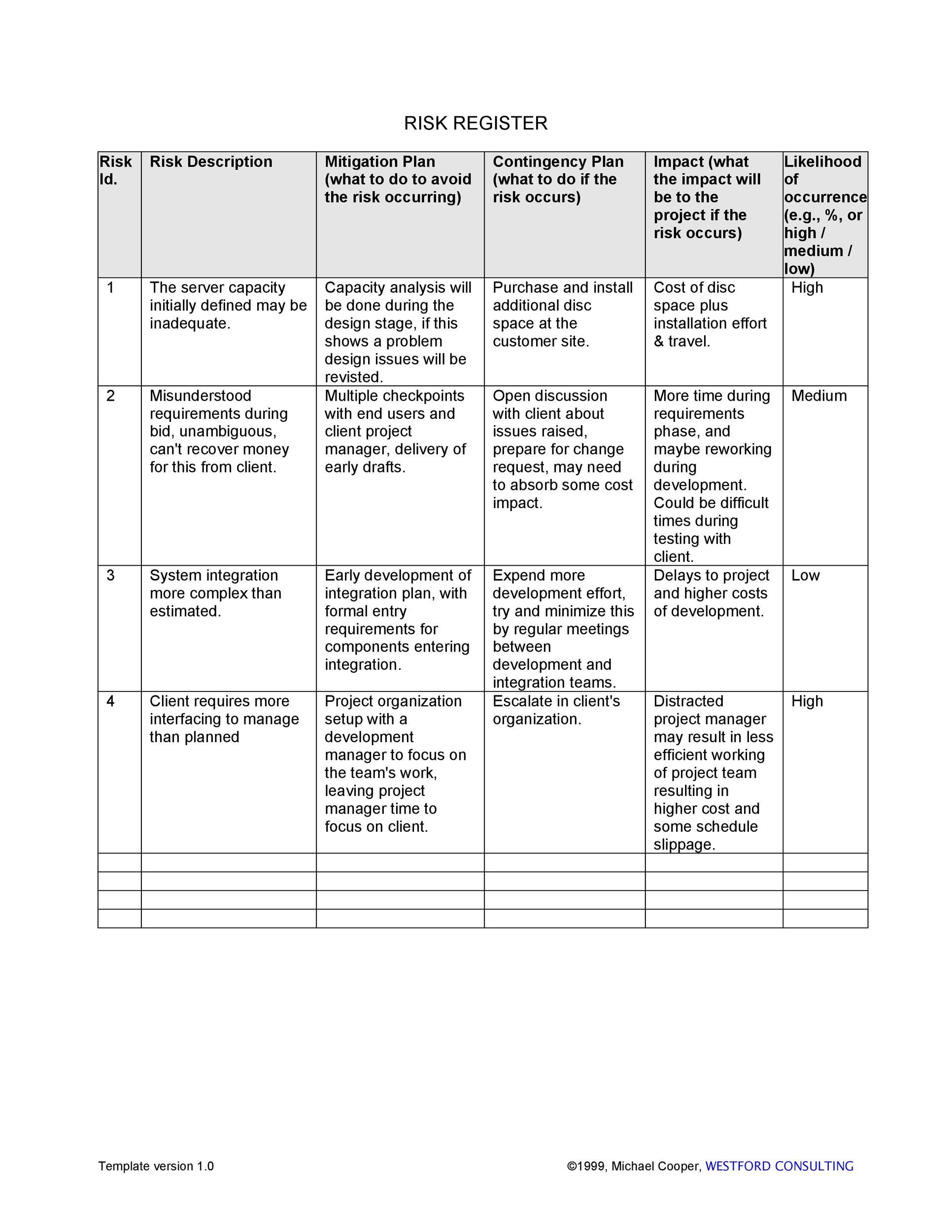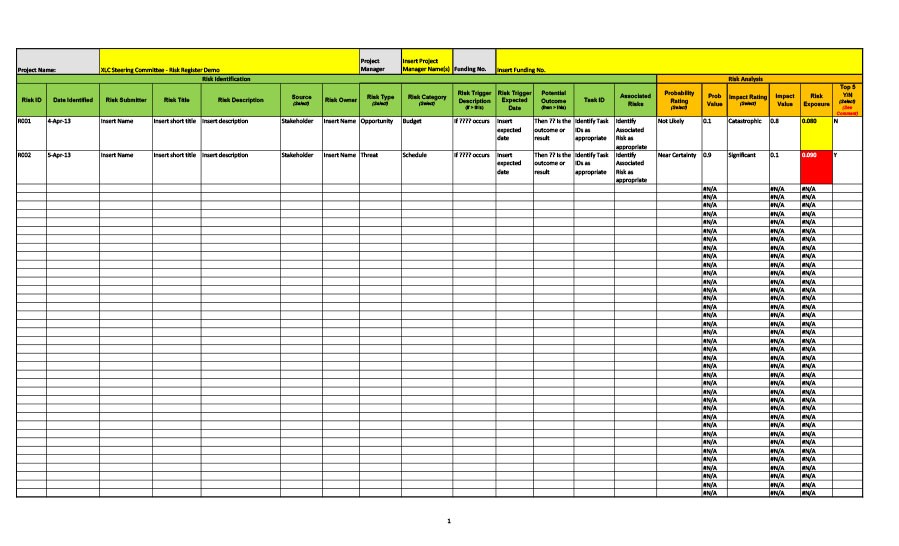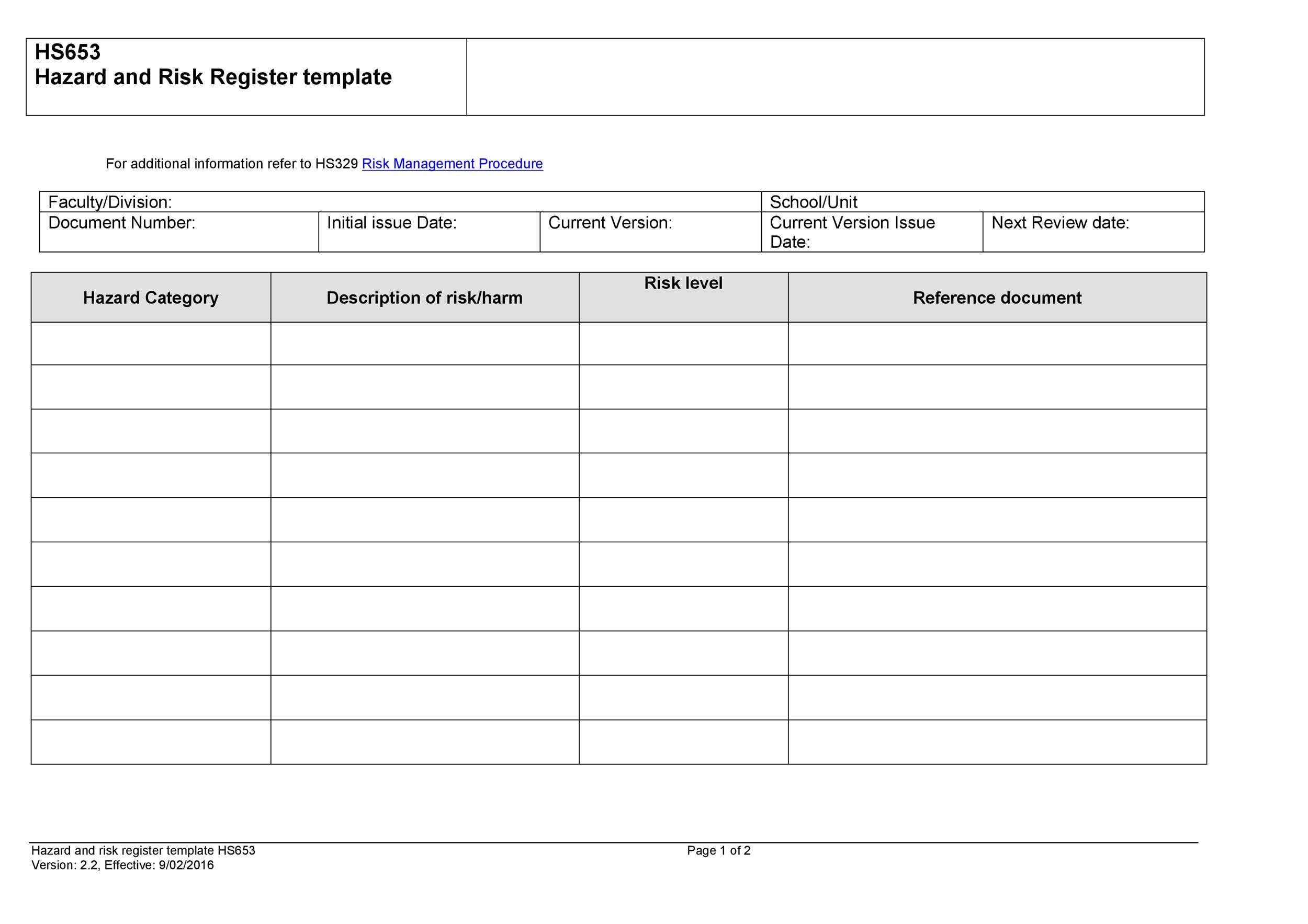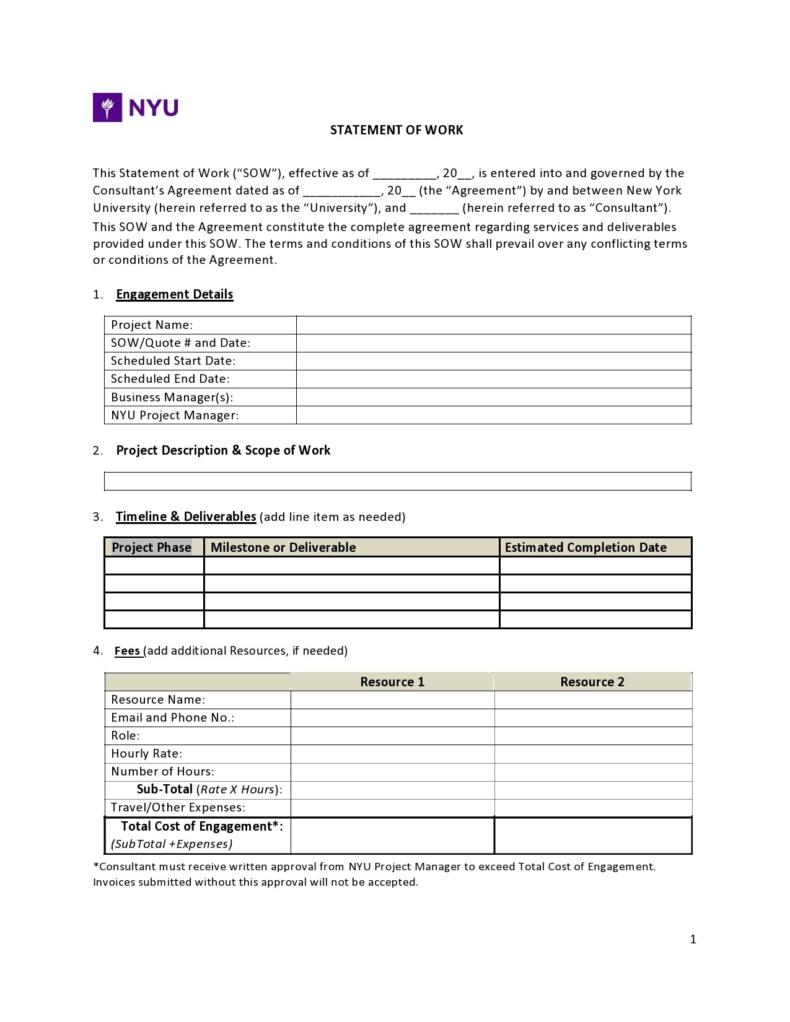A risk register template is a type of tool used in project management and risk management. Creating a project risk register template helps you identify any potential risks in your project. You need to do this as part of your regulatory compliance but also to prepare for any potential issues that might derail your intended outcomes.
Table of Contents
Risk Register Templates
Importance of a risk register template
If you’re familiar with risk management, then you know that a risk register template is extremely important. One of the most important parts of managing risks is to work strategically to deal with any potential issues that may occur when you’re in charge of a specific project.
Therefore, you should already have a plan in place such as a risk register template to list down any potential risks then come up with a plan for you to get your project back on track. Using a risk tracker is very beneficial in case any of the potential risks might become realities.
When using a risk register template Excel, the first thing to do is to think about the risks so you can identify them. Don’t worry if you aren’t able to identify all of the possible risks. If you’ve handled similar projects in the past, this step may be quite easy for you.
But if you’re new in the business or it’s your first time to manage a project, then you may want to do some research first. Either that or you can consult with people who have more experience to help you identify the issues you might run into.
Another option is to use sample risk log templates from projects in the past. Reading these reports gives you an idea of the risks that come with projects or even with starting new businesses. No matter which sources you use for your risk tracker, it’s important for you to create one. Here are the benefits of using a project risk register template:
- Use it to collect possible risks and prepare for them.
- After making a list of all the risks, you can create a plan with actionable steps to ensure that if any of these risks occur, you and your team can deal with them.
- It allows you to assign members of your team to deal with any potential risks which may occur. To do this, you must make sure to include assignments when creating your plan for dealing with risks.
- Even if none of the projected risks occur, you can still use the risk log template as your reference for future projects.
Risk Register Template Excels
Elements of a risk register template
A risk register template is a handy and useful tool which helps add consistency and structure to your risk management process. Using such a template places you ahead of the game and allows you to overcome issues in a faster and more efficient way. Creating this document allows you to identify, evaluate, and deal with risks as they come up.
Risk Trackers
If you’re in charge of a project or if you’re planning to launch a new business, creating a risk register helps you out immensely. Here are the most important elements to include in your risk register template:
- Risk Category
Here, you categorize the risks you come up with. Some common categories include time, resources, environmental, scope, and cost. Using categories allows you to think of the likeliest risks which may occur and group them together for your reference. - Risk Description
This refers to a short description of each of the risks. It’s important to include this so anyone else who reads your project risk register template knows what each risk is all about. - Risk ID
This refers to a unique ID number you use to identify and to keep track of the information in your template. Assigning Risk IDs allows you to find them easily when the situation arises. - Project Impact
For this, you provide a short description of how the risk might impact the project. Including this description allows you to determine which are the most urgent risks to deal with them several occur at the same time. - Likelihood
Come up with an estimation of the probability or likelihood that each of the risks would occur and become an issue. You can use qualitative estimations but if you have enough information, quantitative estimations work well too. - Consequence
This refers to the potential impact or consequence of a particular risk if it becomes a reality. Including this information allows you and everyone else on your team to know how severe the risks are and how to deal with them. - Risk Rank
This is the level or the magnitude of each of the risks. You can come up with the ranking by combining the consequence and the likelihood of each risk. - Risk Trigger
It’s also important to indicate the triggers that would signal that you need to start implementing your contingency plans. This makes it easier for you to know exactly when you must deal with the risk. - Prevention Plan
This refers to an action plan as part of your risk tracker that you create in order to prevent the occurrence of risks. It’s always better to prevent issues from arising rather than having to deal with them. - Contingency Plan
Even despite all your prevention efforts, some risks might still occur. In such cases, you must have a different action plan which you would use to address these risks when they occur. That way, your project won’t have to get delayed because you don’t have a plan. - Risk Owner
This refers to the person you assign to manage the risk when it occurs. Make sure that each risk owner knows about the contingency plans you’ve created so they know exactly what to do. - Residual Risk
This refers to the risk which remains even after you’ve dealt with it. In such a case, you can assign the level of risk as “Low.”
Project Risk Register Templates
Creating your risk register template
Now that you know more about the important elements of a risk register template, you must also know how to create the document itself. You need to go through a number of steps with your team. That way, you can create an effective template which your whole team can use throughout the project’s duration:
- Identification of risks
Have a brainstorm session with your team about the potential risks of your project. Since each of the team members handles different parts of the project, they can use their knowledge and expertise to provide input about these risks. You may also want to talk to your stakeholders and ask them if they have any ideas from their previous experiences. - Come up with descriptions
Next, come up with individual descriptions of the risks. Although you don’t have to write long descriptions, try to be as detailed as you possibly can. Other people might not understand a description that’s too vague. When this happens, they won’t really know what the risk refers to.
To make sure that the descriptions you’ve written are easy to understand, you may want to ask someone else to read them. If the other person understands what each of the risks means, you’re good to go! - Think about how these risks will impact your project
After you’ve established and explained the risks, it’s time to explain how these potential risks might impact your project. This information helps everyone see the severity of the risks based on how much of an impact they would make on your project.
The risks which may potentially delay your project are the most important ones to look out for. Also, these are the risks which you must deal with right away so they won’t endanger your project now and in the future. - Come up with your action plan for dealing with the risks
The next thing to do is to come up with actionable steps for dealing with each of the risks. This is probably the most important part of your risk log template as it provides everyone with important information about how they can deal with issues when they arise.
Without these steps, the members of your team won’t know what to do in the case where a risk or an issue occurs. - Prioritize the risks
Not all risks are the same. Some do more damage than others. Therefore, you must prioritize these risks accordingly. You can even assign quantitative or qualitative rankings for each of the risks to show their priority levels. - Assign people to each risk
Finally, you should assign people to handle each of the risks as well. Without a specific person assigned to each risk, you might not even know that they have already happened until they’ve hugely affected your project. - Include any notes and remarks
Although this part isn’t a requirement, it’s quite useful, especially if you need to add other information for the benefit of the other members of your team. You can also include remarks for the people assigned to each of the risks to help them deal with issues when they arise.







